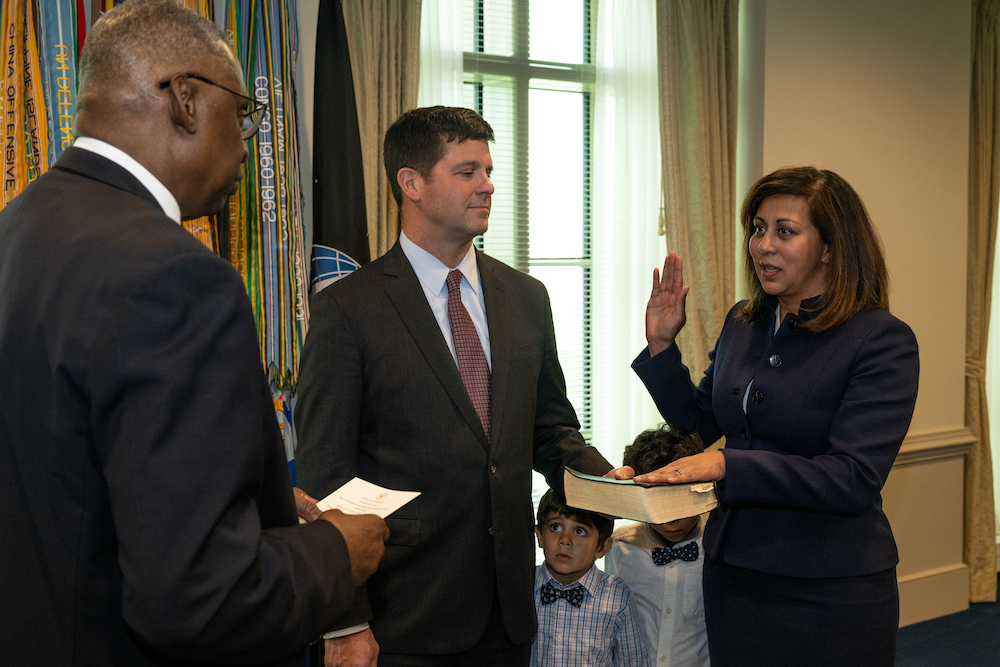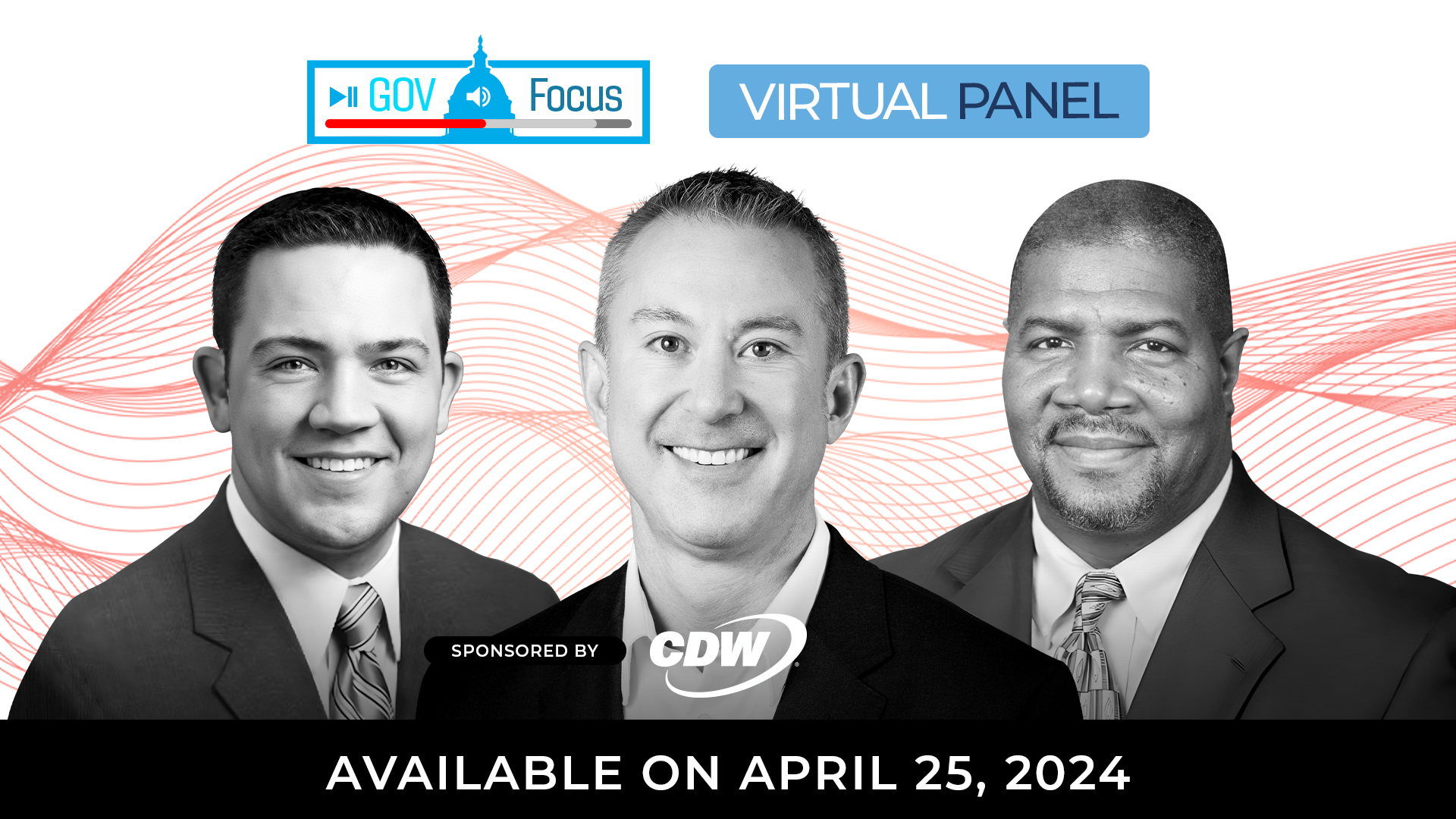Collaboration Enables Faster Health Care Innovation
Leaders from BARDA, CMS, DOD and VA discuss evolving cross-government health collaborations at the 2022 iEX Conference.

Health agencies will prioritize cross-agency partnerships in 2023 to enable faster innovation and better meet the needs of the public, according to comments from federal health IT leaders at the 2022 VHA Innovation Experience Conference (iEX) this week.
“Over the past couple of years, as we’ve thought about meaningful innovation – beyond just incremental innovation – is the idea that value is dynamic and that it is something that exists across multiple stakeholders, patients, providers, and even the systems that care for them,” Ryan Vega, Chief Officer of the Office of Healthcare Innovation and Learning at VHA, said Thursday during iEX.
Vega said it’s essential to develop an ecosystem with partnerships across government and industry to drive value and innovation. COVID-19 catalyzed federal agencies to work across government to deliver innovation faster. Now, government hopes to shorten the timeline for all health care innovations and quickly iterate.
“The ability to share those risks, the ability to leverage the talents and both human and working capital that exist across, actually allows us to get better solutions. When you have more diverse opinions, when you have more diversity of thought and challenge, you get a better product, and that product is more likely going to deliver value to the end user than if you try to go at this alone,” Vega said.
Sandeep Patel, BARDA’s director of Division of Research, Innovation, and Ventures (DRIVe) said health agencies must be able to meet patients where they’re at in order to drive innovation at the speed of demand.
“It’s crucial to respond. And I think developing these kinds of partnerships where you share capabilities together, I think is going to be critical,” Patel added.
Earlier this year, VHA announced a new collaboration with the Food and Drug Administration to streamline testing methods for new products, such as medical devices.
By guiding innovators through the FDA’s regulatory process, the collaboration will be a “huge enabler,” especially for innovators that don’t have access to much capital or experience in the federal development space.
“That’s going to help you know exactly what you need to do to show that your device is safe and effective,” said Beth Ripley, VHA’s Deputy Chief Officer of the Office of Healthcare Innovation and Learning. “We’re going to be working on that together in this collaboration. What that’s going to do is keep you from meandering down a path trying to find your way to whatever the FDA might need. It’s going set you on the straight and narrow, so you’re going to save money and time.”
The Defense Department also collaborates with VA to support the transition from service member to veteran, especially from a health perspective. Nathanael Higgins, Program Manager of DOD’s Defense Innovation Unit, said his team has made a conscious effort to identify areas of alignment with VA to create synergies.
“Instead of wasting investments in the same area, let me capture what you’ve done and recreate it and vice versa,” Higgins said. “From that, beautiful partnerships have formed. We’ve shared technologies, everything from drones that can deliver blood supplies and prescriptions to augmented reality.”
CMS Innovation Center CMO Dora Hughes said end user experience and needs should be at the core of collaboration, especially with regard to health care innovation.
“We are also listening to our beneficiaries and bringing the patient voice to understand… the beneficiary and the end user – what are their values and how do they think about it? How do we incorporate that lens into our decision making? That’s one component of decision making,” Hughes said.
As agencies place a greater emphasis on end users and patients, social determinants of health (SDOH) help identify new gaps. Hughes said SDOH is a new area of CMS exploration to better support underserved communities. Ripley said, moving forward, VA will expand its health care innovation to create new solutions across transportation, food security, homelessness and more to better serve citizens’ health needs.
“That’s really helped to expand our thinking about what are some of the things we can do, as one of the nation’s largest pairs, to support the integration of clinical and community health care,” Hughes said.
This is a carousel with manually rotating slides. Use Next and Previous buttons to navigate or jump to a slide with the slide dots
-

The CAIOs Leading Responsible AI Development Across Government
Since the White House's AI executive order, federal agencies are in the process of naming chief artificial intelligence officers.
7m read -

How TMF is Helping Agencies Accelerate Tech Modernization
The program launched a new AI pilot to expedite TMF applications as agency leaders urge more to consider applying for funds.
4m read -

Defense Board to Pitch Solutions for Closing Tech Talent Gaps
Defense Innovation Board members cite need to modernize people management the same way government modernizes technology.
4m read -

Energy Researchers Aim For Holistic Approach to AI Issues
A new center at the Oak Ridge National Laboratory is looking at under-researched areas of AI to better understand how to secure it.
2m read
-

How TMF is Helping Agencies Accelerate Tech Modernization
The program launched a new AI pilot to expedite TMF applications as agency leaders urge more to consider applying for funds.
4m read -

CDC Updates Public Health Data Strategy
Accelerating data sharing through capabilities like electronic case reporting make up a large portion of the new two-year plan.
3m read -

Transitioning Systems for Modern Agency Missions
IT modernization is a constant process necessary for improving customer service, mission delivery and collaboration.
40m watch -

HHS Makes One-Stop Cybersecurity Shop in ASPR
The agency is working on standards and cyber incident response capabilities to help health care organizations combat ransomware threats.
4m read




